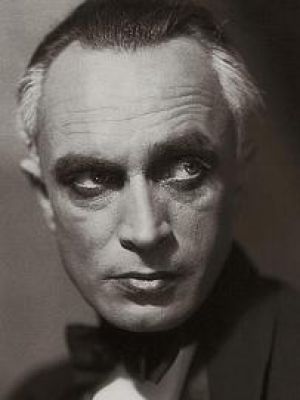夜中行

- 别名:Journey Into the Night / The Dark Road
- 类型:剧情
- 导演:F·W·茂瑙
- 编剧:卡尔·迈耶/HarrietBloch
- 主演:奥拉夫·方斯/埃尔娜·莫雷纳/康拉德·韦特
- 制片地区:德国
- 影乐酷ID:5004927dv
- IMDB:tt0011217
- 语言:德语
- 片长:69 分钟(restored version)
- 上映:1921-01-21
- 国内票房¥:暂无
- 全球票房$:暂无
- 简介:This film's German title would translate as "Journey in the Night", but that "night" is metaphoric: it refers to blindness, rather than anything nocturnal. The film's most notable merits are its photography (by Max Lutze), the direction by F.W. Murnau (a bit lighter than usual from this director) and a remarkable performance by Conrad Veidt ... an actor who never fails to impress me, yet who surpasses his own high standards in this drama. SPOILERS THROUGHOUT. The first reel of this film plays almost like a comedy. Doctor Eigil Börne is engaged to Lily, until a fateful evening when he attends the music-hall performance of Helene, a vamp who sets her cap for the wealthy and respected physician. Helene performs an erotic dance in a bizarre costume resembling a giant rosebud that conceals the entire upper half of her body. As she dances, the petals fall away to reveal the dancer within. Helene fakes an injury on stage, knowing that the doctor in the audience will come to her aid. Helene seduces the doctor while he examines her feet. (Sounds good to me.) Before long, poor Lily is left neglected. The doctor marries Helene and whisks her off to the countryside, where he opens a surgery for the local peasants. So far, the film still has the feel of a comedy. There's a weird sequence in which Helene disguises herself as a peasant woman, then shows up at her husband's surgery ... pretending to need treatment for an injured foot, and waiting to see how long it takes for him to recognise her. Even though Murnau establishes that this "peasant" woman is really the doctor's wife in disguise, he doesn't seem to trust us to follow the action. While the doctor is examining Helene's foot, Murnau cuts to a big close-up of actress Erna Morena smirking out from within her disguise, to remind us who this woman really is. But now, in a starkly beautiful sequence, we see a dinghy rowing toward the shore, with a tall gaunt figure standing upright between the gunwales. Even in extreme long shot, the silhouette of Conrad Veidt is unmistakable, and even from this great distance he radiates tremendous presence. Still, it makes no sense for him to stand up in the boat ... and even less sense when we learn that Veidt is playing a blind man. I assumed that Murnau told Veidt to stand up in this shot, so as to give more emphasis to the arrival of his character ... but later in the film, we see the much less dramatic form of Olaf Fønss (as Dr. Börne) standing up in the same boat. Veidt plays a painter (apparently of landscapes; we never see his work) who has gone blind, and who has come to the famous doctor for treatment. Börne performs some unspecified surgery. Veidt recovers his eyesight, with tragic results ... and then goes blind again. I knew that Veidt was a great actor, yet his performance in this film is a revelation. He stalks through his early scenes without a cane or a guide, yet is entirely believable as a sightless man. The scene in which his sight is restored is a tour de force. Later, the scene in which his blindness returns is another tour de force. Conrad Veidt had the most expressive hands in the history of film acting, and he uses them exquisitely here: probing sightlessly, gesticulating. Although most of "Journey into the Night" is brilliant, there is one unnecessarily ludicrous touch at the end of the film. The very last shot is a close-up of a handwritten letter, authored by the blind artist AFTER his blindness has returned! How did he manage to write it? Murnau should have inserted a brief shot of Veidt's blind artist dictating this letter to another person, and then shown us this amanuensis writing down Veidt's words. Despite a few minor flaws, I'll rate "Journey in the Night" a full 10 out of 10. It's a splendid example of Murnau's skills, and one of Conrad Veidt's most electrifying performances.












